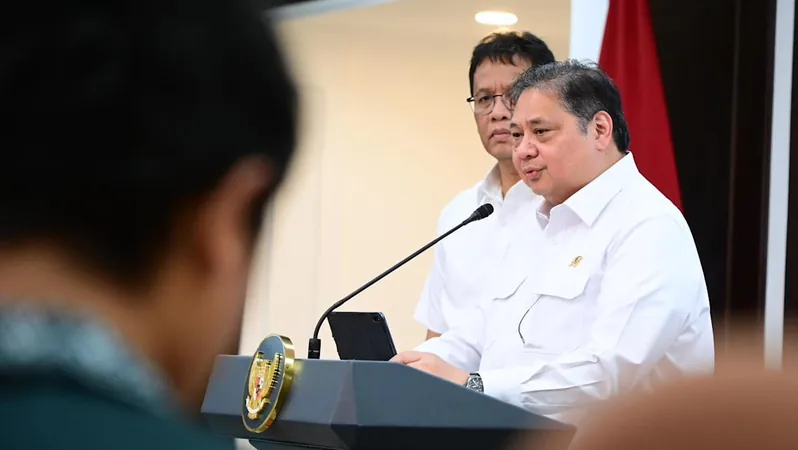
Indonesia's Controversial $1 Billion Stimulus: A Small Package with Big Implications?
2025-09-17
Author: Mei
JAKARTA: Indonesia's newly announced stimulus package, totaling nearly $1 billion, is more than just a method to boost economic growth—it's a strategic move to quell rising public discontent following a wave of recent protests.
Unveiled on September 15, this package, amounting to 16.23 trillion rupiah ($989.3 million), marks the third economic intervention in 2025. While the previous packages were larger—33 trillion rupiah in January and 24.4 trillion in June—this one is distinct in its focus on addressing inequalities and labor shortages.
The government's plan includes initiatives such as internships for 20,000 university graduates and cash-for-work programs for over 600,000 individuals from September to December. Analysts suggest these measures reflect a shift towards sustainable solutions in light of citizens' demands for change.
Deni Friawan from the Centre for Strategic and International Studies (CSIS) characterized the package as a goodwill gesture, recognizing the government's previous tone-deafness to societal issues. "They now seem aware of the economic slowdown and the urgent need for solutions," he noted.
Though there was anticipation of protests in Jakarta, the turnout was subdued, partly due to poor weather, suggesting that the stimulus might already be having some effect on public sentiment.
What’s Inside the Stimulus Package?
Set to roll out in the fourth quarter, this stimulus package was presented by Coordinating Minister for Economic Affairs, Airlangga Hartarto, alongside the new Finance Minister, Purbaya Yudhi Sadewa. The initiative is structured into a format dubbed "8+4+5": eight acceleration programs for 2025, four follow-up programs for 2026, and five job-creation initiatives.
Key measures within the package include: paid internships for graduates, distribution of 10 kg of rice to 18.3 million families, tax relief for specific low-income workers, and a 50% subsidy on accident insurance for ride-hailing and logistics workers.
In a bid to create jobs, the government plans to launch co-op schemes and develop fishing villages, while projecting significant replanting efforts that could lead to 1.6 million new jobs by 2026.
Concerns Over Effectiveness and Funding
Despite these ambitious plans, skepticism remains about the package's ability to meet the government's economic growth target of 5.2% for 2025. Economists warn that the timeline is tight and challenges abound, especially with Indonesia's economy only showing modest growth figures—a mere 4.87% in the first quarter and 5.12% in the second quarter of this year.
Critics, including Bhima Yudhistira from CELIOS, argue that while the stimulus offers tax relief, many workers in the tourism sector already earn below taxable income levels, rendering the measure largely ineffective. He urged the government to reconsider tax exemptions to bolster disposable income.
As the government navigates its fiscal policy, fears persist about the long-term sustainability of funding these initiatives, especially with a projected fiscal deficit of 2.78% of GDP—its highest since the pandemic.
Is This Enough to Turn the Tide?
As Indonesia's economic landscape grows increasingly complex, the pressing question lies not just in achieving growth targets but ensuring that such growth is inclusive and sustainable. Analysts highlight the importance of balancing rapid expansion with fiscal discipline and addressing the needs of potentially marginalized groups.
Purbaya's optimistic outlook suggests that with the right strategies in place, the government can indeed create an economic environment where public protests dissipate, but experts caution that true stability comes from more than just growth figures—it requires genuine improvement in the lives of Indonesian citizens.

 Brasil (PT)
Brasil (PT)
 Canada (EN)
Canada (EN)
 Chile (ES)
Chile (ES)
 Česko (CS)
Česko (CS)
 대한민국 (KO)
대한민국 (KO)
 España (ES)
España (ES)
 France (FR)
France (FR)
 Hong Kong (EN)
Hong Kong (EN)
 Italia (IT)
Italia (IT)
 日本 (JA)
日本 (JA)
 Magyarország (HU)
Magyarország (HU)
 Norge (NO)
Norge (NO)
 Polska (PL)
Polska (PL)
 Schweiz (DE)
Schweiz (DE)
 Singapore (EN)
Singapore (EN)
 Sverige (SV)
Sverige (SV)
 Suomi (FI)
Suomi (FI)
 Türkiye (TR)
Türkiye (TR)
 الإمارات العربية المتحدة (AR)
الإمارات العربية المتحدة (AR)